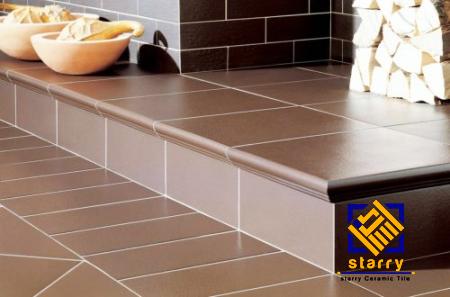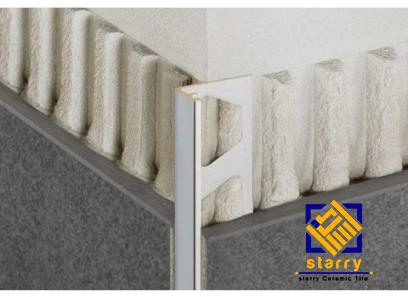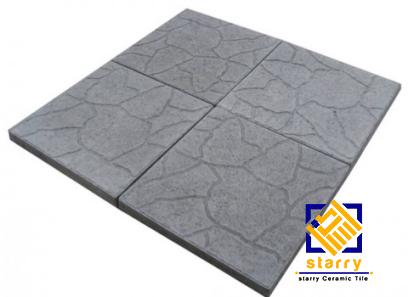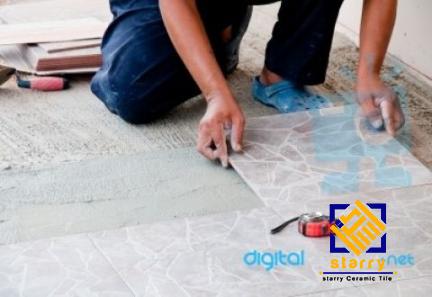When it comes to renovating a bathroom, one of the key decisions that homeowners face is whether to install wall or floor tiles first in the shower. This decision can have a significant impact on the overall look and feel of the space, as well as the ease of installation and long-term maintenance. In this article, we will explore the pros and cons of installing wall tiles first versus floor tiles first in a shower, helping you make an informed decision for your next bathroom renovation project. One of the main considerations when deciding whether to install wall or floor tiles first in a shower is the overall design aesthetic you are trying to achieve. If you are going for a more seamless and cohesive look, installing the wall tiles first can help create a visually appealing transition between the shower walls and the floor. By starting with the wall tiles, you can establish a design element that can then be complemented and enhanced by the choice of floor tiles.

.
 On the other hand, starting with the floor tiles can also have its advantages. By laying the floor tiles first, you can ensure that the shower pan is properly sloped to allow for proper drainage. This can be particularly important in showers with large format tiles, as any imperfections in the slope of the floor can lead to standing water and potential issues with mold and mildew down the line. Additionally, starting with the floor tiles can help establish a stable base for the wall tiles to be installed on, ensuring that they are properly aligned and securely attached. In terms of installation complexity, there are also considerations to take into account when deciding whether to install wall or floor tiles first in a shower. Installing wall tiles first can be more straightforward, as there are typically fewer obstacles to work around and less risk of damaging the tiles during installation. However, starting with the floor tiles can also be a viable option, especially if you are working with a shower pan that requires specific waterproofing measures. When it comes to long-term maintenance, the order of tile installation in the shower can also play a role in the durability and longevity of the finished project. By installing the wall tiles first, you can minimize the risk of water damage to the walls behind the tiles, as the grout lines and tile joints will be sealed and protected from moisture. This can help prevent issues such as mold growth and water infiltration, which can be more difficult and costly to repair in the long run.
On the other hand, starting with the floor tiles can also have its advantages. By laying the floor tiles first, you can ensure that the shower pan is properly sloped to allow for proper drainage. This can be particularly important in showers with large format tiles, as any imperfections in the slope of the floor can lead to standing water and potential issues with mold and mildew down the line. Additionally, starting with the floor tiles can help establish a stable base for the wall tiles to be installed on, ensuring that they are properly aligned and securely attached. In terms of installation complexity, there are also considerations to take into account when deciding whether to install wall or floor tiles first in a shower. Installing wall tiles first can be more straightforward, as there are typically fewer obstacles to work around and less risk of damaging the tiles during installation. However, starting with the floor tiles can also be a viable option, especially if you are working with a shower pan that requires specific waterproofing measures. When it comes to long-term maintenance, the order of tile installation in the shower can also play a role in the durability and longevity of the finished project. By installing the wall tiles first, you can minimize the risk of water damage to the walls behind the tiles, as the grout lines and tile joints will be sealed and protected from moisture. This can help prevent issues such as mold growth and water infiltration, which can be more difficult and costly to repair in the long run.
..
 Alternatively, starting with the floor tiles can also have maintenance benefits, as it can help create a seamless and watertight transition between the shower floor and walls. By ensuring that the floor tiles are properly installed and sealed, you can reduce the risk of water seeping into the subfloor and causing structural damage over time. This can be particularly important in showers with high levels of foot traffic and exposure to water, as the integrity of the tile installation can help prevent costly repairs in the future. Ultimately, the decision of whether to install wall or floor tiles first in a shower will depend on a variety of factors, including the design aesthetic you are trying to achieve, the complexity of the installation process, and the long-term maintenance considerations. By carefully weighing these factors and consulting with a professional tile installer, you can make an informed decision that will result in a beautifully finished shower that is both functional and aesthetically pleasing. In conclusion, both wall and floor tiles play a crucial role in the overall design and functionality of a shower. Whether you choose to install wall tiles first or floor tiles first will depend on a variety of factors, including your design preferences, installation requirements, and long-term maintenance considerations. By carefully considering these factors and working with a professional installer, you can create a stunning and durable shower that will stand the test of time. When it comes to selecting the right tiles for your shower, there are a few additional considerations to keep in mind to ensure that you make the best choice for your specific needs and preferences. One important factor to consider is the material of the tiles. Both wall and floor tiles come in a wide range of materials, each with its own unique characteristics and benefits. For example, ceramic and porcelain tiles are popular choices for showers due to their durability, water resistance, and ease of maintenance. Natural stone tiles, such as marble, travertine, and slate, offer a luxurious and timeless look but require more maintenance to prevent staining and etching.
Alternatively, starting with the floor tiles can also have maintenance benefits, as it can help create a seamless and watertight transition between the shower floor and walls. By ensuring that the floor tiles are properly installed and sealed, you can reduce the risk of water seeping into the subfloor and causing structural damage over time. This can be particularly important in showers with high levels of foot traffic and exposure to water, as the integrity of the tile installation can help prevent costly repairs in the future. Ultimately, the decision of whether to install wall or floor tiles first in a shower will depend on a variety of factors, including the design aesthetic you are trying to achieve, the complexity of the installation process, and the long-term maintenance considerations. By carefully weighing these factors and consulting with a professional tile installer, you can make an informed decision that will result in a beautifully finished shower that is both functional and aesthetically pleasing. In conclusion, both wall and floor tiles play a crucial role in the overall design and functionality of a shower. Whether you choose to install wall tiles first or floor tiles first will depend on a variety of factors, including your design preferences, installation requirements, and long-term maintenance considerations. By carefully considering these factors and working with a professional installer, you can create a stunning and durable shower that will stand the test of time. When it comes to selecting the right tiles for your shower, there are a few additional considerations to keep in mind to ensure that you make the best choice for your specific needs and preferences. One important factor to consider is the material of the tiles. Both wall and floor tiles come in a wide range of materials, each with its own unique characteristics and benefits. For example, ceramic and porcelain tiles are popular choices for showers due to their durability, water resistance, and ease of maintenance. Natural stone tiles, such as marble, travertine, and slate, offer a luxurious and timeless look but require more maintenance to prevent staining and etching.
…
 Glass tiles can add a touch of elegance and light to the shower space, but they can be more challenging to install and keep clean. Another consideration when choosing tiles for your shower is the size and shape of the tiles. Large-format tiles are a popular choice for both walls and floors in modern showers, as they can create a sleek and seamless look with fewer grout lines. However, large tiles can be more challenging to install, especially on curved or irregular surfaces. Small mosaic tiles are a versatile option that can add texture and visual interest to the shower walls or floors. They are also easier to work with around corners and curves, allowing for more intricate design possibilities. In addition to the material and size of the tiles, the color and pattern of the tiles can also make a significant impact on the overall look and feel of the shower. Light-colored tiles can make a small shower feel more spacious and airy, while dark-colored tiles can create a cozy and intimate atmosphere. Bold patterns and geometric designs can add a modern and artistic touch to the shower space, while subtle textures and finishes can enhance the tactile experience. When it comes to the grout used to install the tiles, choosing the right color and type can make a big difference in the final look and maintenance of the shower. Grout comes in a variety of colors and finishes, from traditional white and gray to more contemporary hues like black and metallic tones. Epoxy grout is a popular choice for showers, as it is durable, stain-resistant, and waterproof. However, epoxy grout can be more challenging to work with and requires precise installation to ensure a proper seal. In terms of maintenance, proper care and cleaning of the tiles and grout are essential to extend the life of your shower and keep it looking its best. Regular cleaning with a mild detergent and soft brush can help prevent soap scum and mold buildup on the tiles and grout. Sealing the grout lines periodically can also help protect against water damage and staining. For natural stone tiles, it is important to use pH-neutral cleaners and avoid abrasive scrubbing to preserve the integrity of the stone. In conclusion, the decision of whether to install wall or floor tiles first in a shower is just one of many factors to consider when renovating your bathroom. By carefully selecting the right tiles, materials, colors, and finishes for your shower, you can create a space that is both beautiful and functional. Working with a professional tile installer can help ensure that the installation is done correctly and that your shower remains a stylish and inviting retreat for years to come.
Glass tiles can add a touch of elegance and light to the shower space, but they can be more challenging to install and keep clean. Another consideration when choosing tiles for your shower is the size and shape of the tiles. Large-format tiles are a popular choice for both walls and floors in modern showers, as they can create a sleek and seamless look with fewer grout lines. However, large tiles can be more challenging to install, especially on curved or irregular surfaces. Small mosaic tiles are a versatile option that can add texture and visual interest to the shower walls or floors. They are also easier to work with around corners and curves, allowing for more intricate design possibilities. In addition to the material and size of the tiles, the color and pattern of the tiles can also make a significant impact on the overall look and feel of the shower. Light-colored tiles can make a small shower feel more spacious and airy, while dark-colored tiles can create a cozy and intimate atmosphere. Bold patterns and geometric designs can add a modern and artistic touch to the shower space, while subtle textures and finishes can enhance the tactile experience. When it comes to the grout used to install the tiles, choosing the right color and type can make a big difference in the final look and maintenance of the shower. Grout comes in a variety of colors and finishes, from traditional white and gray to more contemporary hues like black and metallic tones. Epoxy grout is a popular choice for showers, as it is durable, stain-resistant, and waterproof. However, epoxy grout can be more challenging to work with and requires precise installation to ensure a proper seal. In terms of maintenance, proper care and cleaning of the tiles and grout are essential to extend the life of your shower and keep it looking its best. Regular cleaning with a mild detergent and soft brush can help prevent soap scum and mold buildup on the tiles and grout. Sealing the grout lines periodically can also help protect against water damage and staining. For natural stone tiles, it is important to use pH-neutral cleaners and avoid abrasive scrubbing to preserve the integrity of the stone. In conclusion, the decision of whether to install wall or floor tiles first in a shower is just one of many factors to consider when renovating your bathroom. By carefully selecting the right tiles, materials, colors, and finishes for your shower, you can create a space that is both beautiful and functional. Working with a professional tile installer can help ensure that the installation is done correctly and that your shower remains a stylish and inviting retreat for years to come.










Your comment submitted.